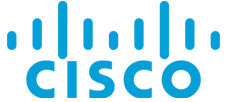Implementing and Operating Cisco Collaboration Core Technologies

The Implementing Cisco Collaboration Core Technologies (CLCOR) v1.0 course helps you prepare for the Cisco® CCNP® Collaboration and CCIE® Collaboration certifications, and advanced-level roles focused on implementation and operation of Cisco collaboration solutions.
You will gain the knowledge and skills needed to implement and deploy core collaboration and networking technologies, including infrastructure and design, protocols, codecs, and endpoints, Cisco Internetwork Operating System (IOS®) XE gateway and media resources, call control, Quality of Service (QoS), and additional Cisco collaboration applications.
This course also helps you prepare you to take the exam, Implementing Cisco Collaboration Core Technologies (350-801 CLCOR), which is part of the new CCNP Collaboration, CCIE Collaboration, and the Cisco Certified Specialist – Collaboration Core certifications.
This course will help you:
- Integrate and troubleshoot Cisco Unified Communications Manager with Lightweight Directory Access Protocol (LDAP) for user synchronization and user authentication
- Implement Cisco Unified Communications Manager provisioning features
- Configure and troubleshoot collaboration endpoints


